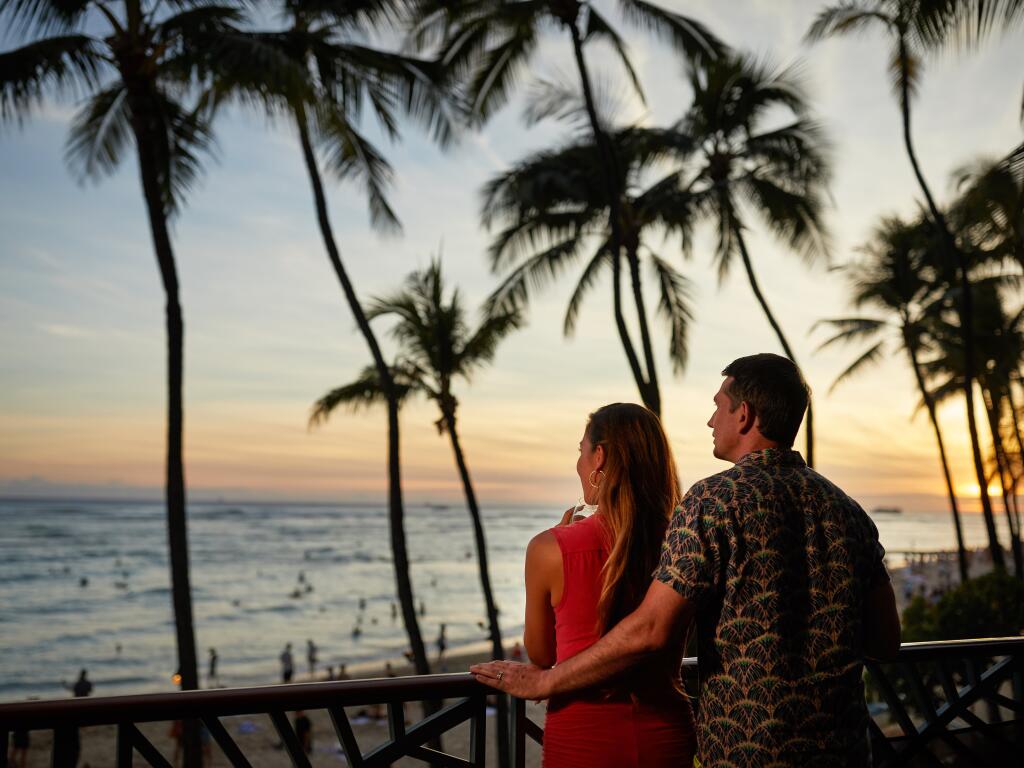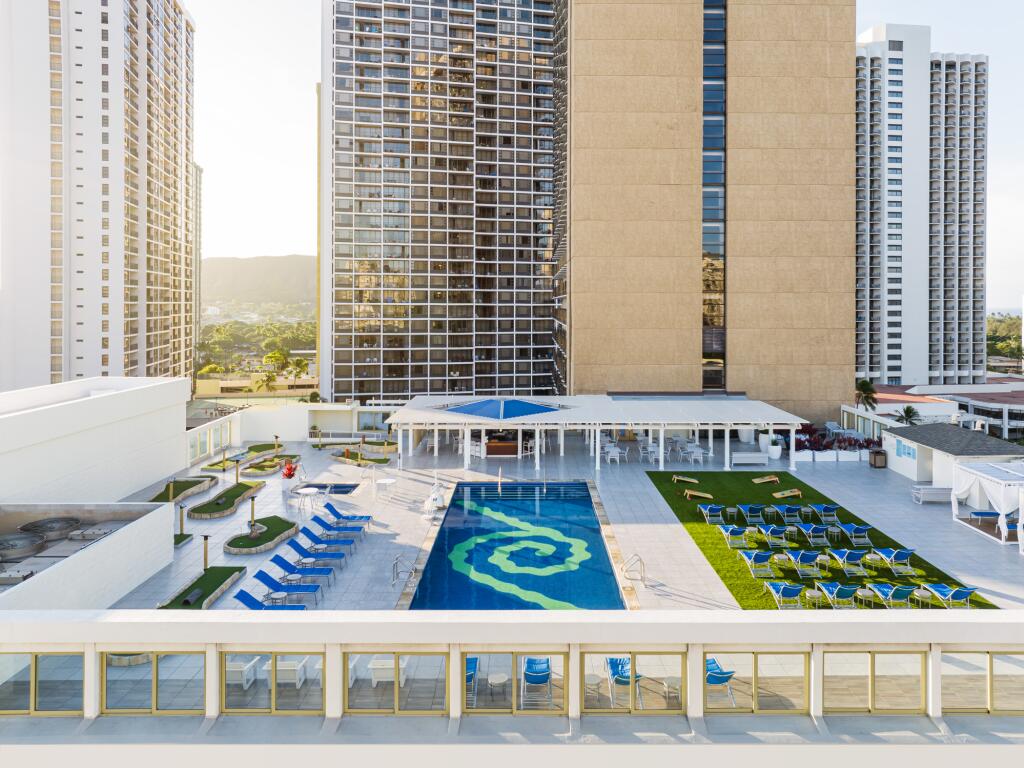Best Time To Visit Hawaii
Hawaii's stunning beaches, rich culture, and breathtaking landscapes make it an incredible destination year-round. While the islands enjoy a warm tropical climate, choosing the right time to visit can help you avoid crowds, secure better deals, and align your trip with ideal weather and activities.
For Australian travellers, early May and late September are among the best times to visit, offering fewer crowds, comfortable temperatures, and competitive travel deals. However, every season in Hawaii has something unique to offer, from world-class surfing and whale watching to cultural festivals and hiking adventures.

When planning a holiday to the Hawaiian Islands, the first thing travellers want to know is the best time to travel. In deciding the best time to visit Hawaii for you, it's important to consider the weather forecast for the time of year, which islands you wish to visit, whether there are any festivals or events you'd like to attend and the price of accommodation and airfares at the time of year.
It's also important to keep in mind whether you're happy to holiday among the high-season crowds, whether the activities and attractions you're interested in are available at the time of year you're looking and, if you're a return visitor to Hawaii, which other islands and seasons you may wish to experience.
Hawaii Package Deals
Understanding Hawaii's Travel Seasons
Hawaii experiences distinct travel seasons influenced by international tourism and school holidays:
Peak Season (December to March, June to August) - The busiest times coincide with the Australian summer holidays and the Northern Hemisphere's winter, drawing large crowds. Expect higher prices and bustling attractions, particularly in December and January.
Shoulder Season (April to early June, September to mid-December) - A great balance of pleasant weather, fewer tourists, and lower accommodation prices. These months provide an ideal time for a relaxed Hawaiian getaway.
If you prefer a quieter trip with better deals, consider visiting during the shoulder months, when the islands are less crowded, and the climate is still warm and inviting.
Hawaii's Weather and Climate by Season
Hawaii's tropical climate ensures warm weather throughout the year, but seasonal variations can influence travel plans.
Summer (April to October) - This is the driest and warmest period, with daytime temperatures averaging between 24°C and 31°C. The ocean is calmer, making it an excellent time for snorkelling, swimming, and hiking.
Winter (November to March) - The cooler months bring occasional rain showers, particularly on the windward sides of the islands. Temperatures range between 18°C and 27°C, and while storms are rare, brief downpours are common.
Hawaii's diverse microclimates mean that while one area may experience rain, another can be sunny and warm. Checking regional forecasts can help you plan activities accordingly.
Best Months to Visit Hawaii
While Hawaii is welcoming year-round, some months stand out for their favourable conditions, offering a balance of weather, events, and affordability.
April to May - Ideal for beach activities and sightseeing with fewer crowds and lower costs before the peak season begins.
September to October - Warm temperatures and thinning tourist numbers make this a fantastic time to visit. The ocean remains calm, and outdoor adventures are in full swing.
December to March - Popular with Australian travellers looking for a tropical escape. While prices are higher, this is the best season for whale watching and world-class surfing.
Travellers looking for cost-effective holidays should consider May and September, when accommodation rates are lower, and attractions are less crowded.
Top Activities and Experiences by Season
Each season in Hawaii offers something unique, from thrilling surf breaks to cultural festivals and scenic hikes.
April to October (Dry Season)
- Snorkelling and Diving - The ocean is at its calmest, making this the best time to explore Hawaii's vibrant marine life. Popular snorkelling spots include Hanauma Bay on Oahu and Kealakekua Bay on the Big Island.
- Hiking and Adventure - Trails such as the Kalalau Trail on Kauai and Haleakalā Crater in Maui offer breathtaking views with comfortable weather for long treks.
- Surfing and Water Sports - South shore beaches like Waikiki Beach in Oahu have consistent waves perfect for beginners, while the North Shore experiences smaller swells.
November to March (Wet Season)
- Whale Watching - Humpback whales migrate to Hawaiian waters from December to April, with Maui offering some of the best viewing spots.
- Surfing the Big Waves - The North Shore of Oahu, particularly at Waimea Bay and the Banzai Pipeline, becomes a hub for professional surfers tackling massive winter swells.
- Cultural Events - This is the best season for experiencing Hawaiian traditions, with festivals such as the Honolulu Festival in March showcasing Polynesian culture through music, dance, and crafts.
No matter the season, Hawaii offers a rich variety of experiences, from ocean adventures to cultural immersion.
Festivals and Events to Plan Your Trip Around
Hawaii's calendar is filled with lively celebrations that reflect its cultural heritage. If you want to experience the islands beyond their beaches, consider timing your visit with one of these major events:
Merrie Monarch Festival (April) - A prestigious hula competition on the Big Island, celebrating Hawaiian dance and traditions.
Lantern Floating Ceremony (May) - A moving event held in Honolulu, where thousands of floating lanterns are released into the ocean in remembrance of loved ones.
Aloha Festivals (September) - A month-long cultural festival across the islands, featuring parades, live music, and traditional Hawaiian arts.
King Kamehameha Day (June 11) - A state-wide holiday honouring the leader who united the Hawaiian Islands, marked by parades and floral ceremonies.
Experiencing these festivals adds a cultural depth to your holiday, allowing you to connect with Hawaii's traditions and history.
Budget-Friendly Travel Tips for Hawaii
Travelling to Hawaii doesn't have to be expensive. With smart planning, you can enjoy an incredible island escape while keeping costs in check.
Travel in Shoulder Seasons - Visiting in April-May or September-October can save you money on flights and accommodation.
Book in Advance - Securing flights and accommodation early often leads to better rates, particularly outside peak travel months.
Consider Self-Guided Adventures - Renting a car and exploring off-the-beaten-path locations can be a cost-effective way to experience the islands.
Travellers looking for affordable Hawaiian holidays should book ahead and take advantage of deals available outside the busiest periods.
Plan Your Travel with TravelOnline
Hawaii is a dream destination no matter the time of year, but choosing when to visit can shape your experience. You might enjoy the warm, dry conditions of April to October or the lively cultural scene of the winter months—there's always something exciting happening across the islands.
For tailored travel advice and to find the best deals for your Hawaiian holiday, speak with a TravelOnline specialist today and start planning your ultimate island escape.



